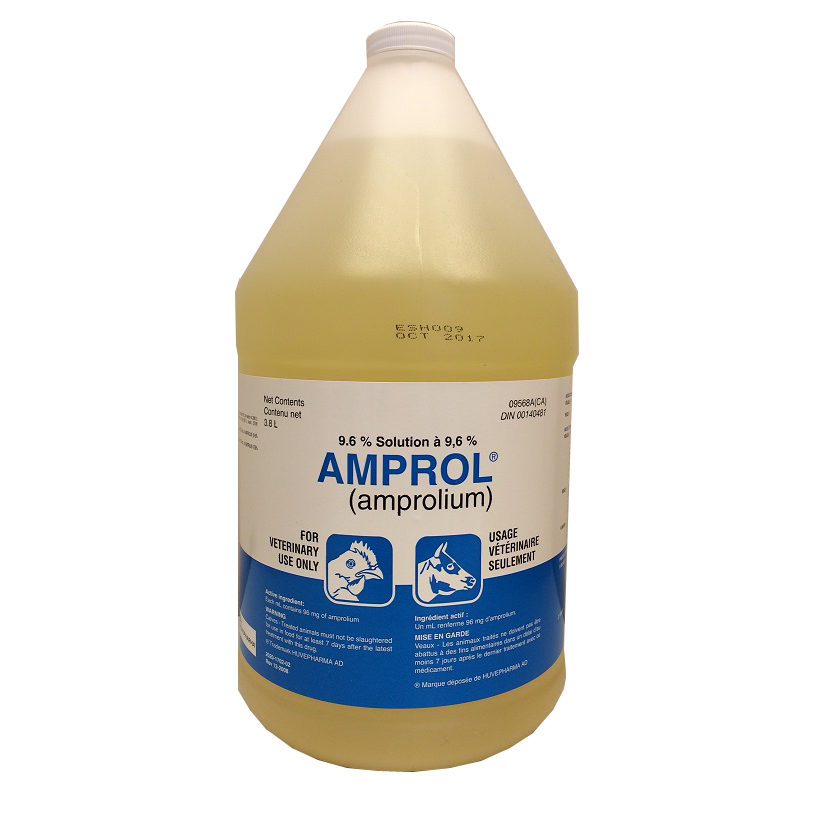4 or more: $130.99 each
This treatment applies to the following species:
-Beef Cattle, Chickens, Dairy Cattle
DIN 00140481
Veterinary Use Only
Active Ingredient: Each mL contains 96 mg of amprolium
Amprol 9.6% Solution Indications
POULTRY – As an aid in the treatment of caecal coccidiosis in growing chickens and laying birds.
CALVES – As an aid in the treatment of coccidiosis caused by Eimeria bovis and E. zuernii in calves.
Use Directions
POULTRY – As soon as caecal coccidiosis is diagnosed, give 0.024% amprolium in the drinking water for 5 to 7 days. Continue the treatment with 0.006% amprolium medicated water for an additional one to two weeks. No other source of drinking water should be available to the birds during this time.
Use as the sole source of amprolium.
CALVES – 0.012% amprolium in drinking water for 5 days. At the usual rate of water consumption, this will provide a daily intake of approximately 10 mg of amprolium per kg of body weight. Give as the sole source of water during the treatment period.
NOTE – When one or more calves show signs of coccidiosis, it is likely that the rest of the group have been exposed, and all calves in the group should be treated.
MIXING DIRECTIONS: To prepare 200 L of medicated water:
| DOSAGE | MIXING DIRECTIONS |
| 0.0240% | Add 500 mL of AMPROL® 9.6% Solution to about 25 L of water in a 200 L medication barrel. Stir, then add water to the 200 L mark. STIR THOROUGHLY. |
| 0.0120% | Use same directions as above but use 250 mL of AMPROL® 9.6% Solution. |
| 0.0060% | Use same directions as above but use 125 mL of AMPROL® 9.6% Solution. |
Warnings
Calves – Treated animals must not be slaughtered for use in food for at least 7 days after the latest treatment with this drug.
Cautions:
1. POULTRY – If no improvement is noted within 3 days, have the diagnosis reconfirmed and follow the instructions of your veterinarian or poultry pathologist. Losses may result from intercurrent disease or other conditions affecting drug intake which can contribute to the virulence of coccidiosis under field conditions.
2. CALVES – For a satisfactory diagnosis, a microscopic examination of the feces should be done before treatment. When treating outbreaks, drug should be administered promptly after diagnosis is determined.
Do not use in calves intended for future breeding.
Storage
Protect from freezing. Keep above 5°C.

